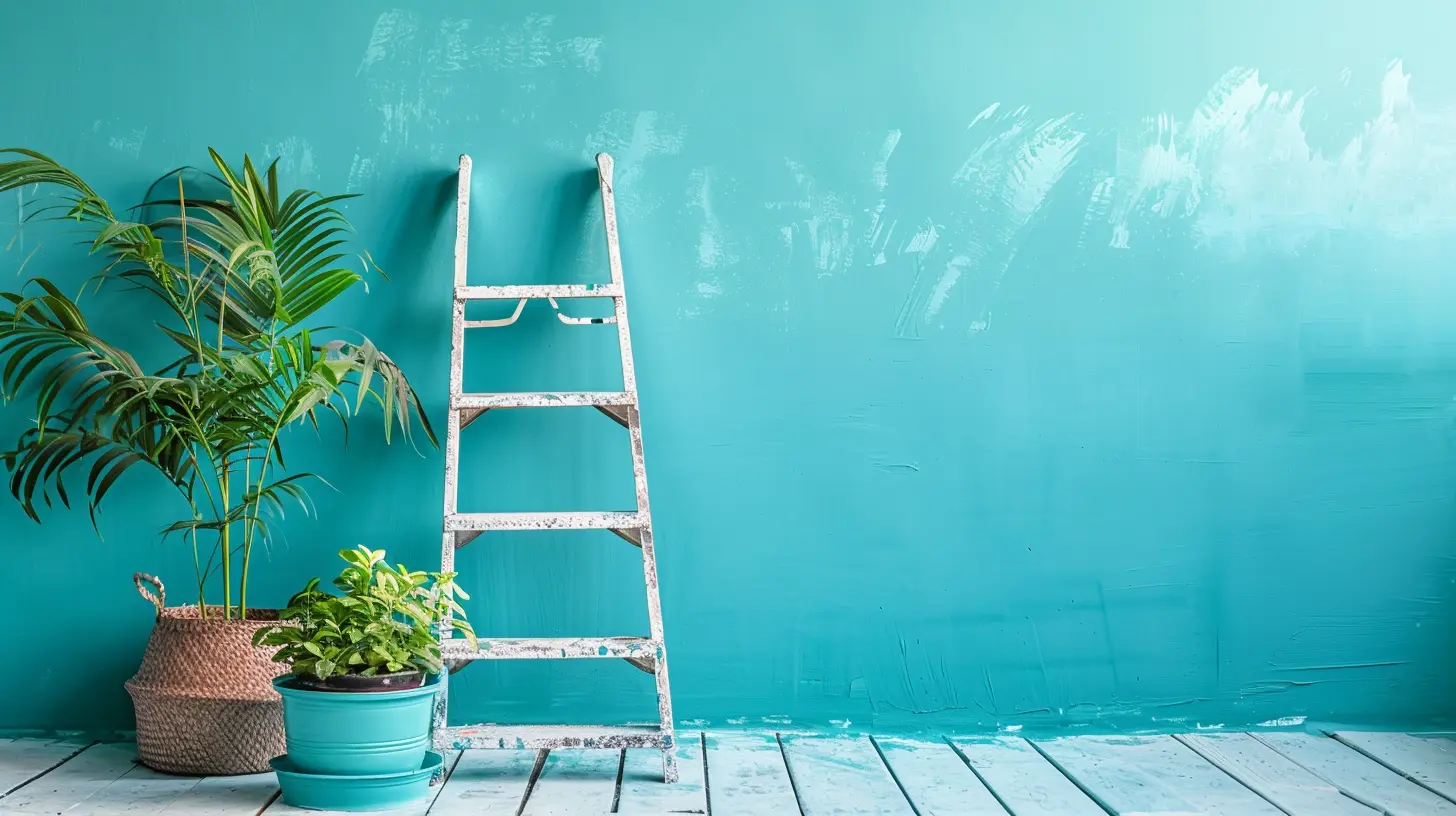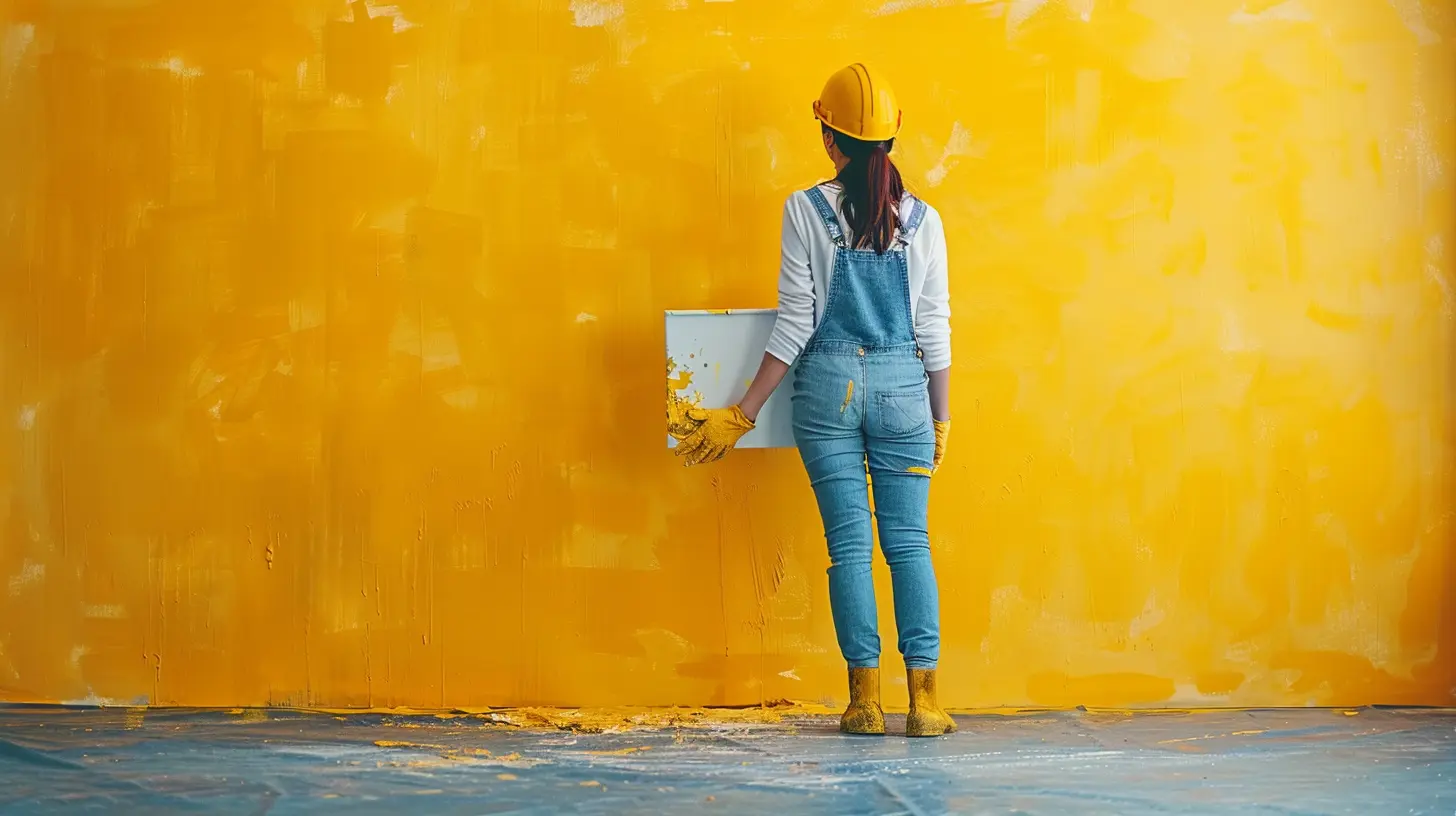How to Refresh Your Home with a Simple Paint Job
28 July 2025
Let's be honest—nothing transforms a home quite like a fresh coat of paint. Whether you're trying to liven up a tired living room, brighten a dark hallway, or just shake things up a bit, a simple paint job can work wonders. Ever walked into a freshly painted room and felt like you stepped into an entirely new space? Yeah, that’s the magic of paint.
In this article, we're going to walk you through how to refresh your home with a simple paint job. It’s budget-friendly, surprisingly therapeutic, and—best of all—something you can totally do yourself.
Why Painting Is the Easiest Home Upgrade You Can Do
Let’s face it, not all home improvements need a contractor, blueprints, and a loan. A paint job is like a makeover for your walls. You don’t need fancy tools or years of experience. Just a brush, some paint, and a little bit of patience.Think about it: a new color can make your space feel bigger, cozier, trendier, or calmer. It sets the mood. Want a peaceful bedroom? Go with soft blues or warm neutrals. Hoping to boost your productivity in the home office? Try energizing greens or yellows.
And here’s the kicker—it increases your home’s value, too. Even if you're not planning to sell, keeping your place looking fresh has its perks. It’s like giving your home a facelift without lifting a hammer.
Step 1: Choose the Right Color (This Is Huge)
Alright, let's tackle the big question first: what color should you paint?Picking the right color isn’t just about what looks good on a swatch. It’s about how it makes you feel. Color psychology plays a bigger role in your home than you might think.
Some Quick Tips for Choosing Colors:
- Stick with neutrals for a timeless, flexible look- Go bold in small doses (accent walls, doors, cabinets)
- Test swatches in natural light and artificial light
- Match your vibe—think about how you want to feel in the room
If you’re struggling to decide, try painting a couple of poster boards and hanging them on your wall for a few days. Live with the color before you commit. Trust me, it’ll save you from repainting next weekend.
Step 2: Prepare Your Space (Don’t Skip This)
Before that first brushstroke, prep is key. This is where the difference lies between a smooth, professional-looking wall and one that looks like your toddler helped you paint it.Here's What You’ll Need to Do:
- Move furniture or cover it completely- Remove switch plates and outlet covers
- Clean the walls—a damp cloth can take off dust and grime
- Fill holes or cracks with spackle
- Tape off trim and edges to get those crisp, clean lines
Think of this step as setting the stage. You wouldn’t cook dinner in a dirty pan, right? Same applies here.
Step 3: Pick Your Paint Type
Let’s talk finish. It’s easy to get overwhelmed at the hardware store—matte, eggshell, satin, semi-gloss, gloss...what does it all mean?Here’s a quick cheat sheet:
- Matte/Flat: Hides imperfections but hard to clean. Great for ceilings or low-traffic areas.
- Eggshell: Slightly glossy and more durable. Perfect for most walls.
- Satin: A nice balance for kitchens, bathrooms, or areas with lots of touch.
- Semi-Gloss and Gloss: Super durable and easy to clean. Best for trim, baseboards, and doors.
If you’ve got kids or pets, go with something more durable like satin or semi-gloss. Trust me, you’ll thank yourself later.
Step 4: Tools of the Trade
You don’t need to break the bank, but good tools make a huge difference. Here's your basic supply list:- Roller (get the right nap for your wall texture)
- Brushes (angled for corners and trim)
- Paint tray
- Drop cloths or old sheets
- Painter’s tape
- Spackle and putty knife for patching
- Ladder or step stool
- Stir sticks (they’re free at the store!)
Pro tip: Invest just a little more in quality brushes and rollers. Cheap ones shed bristles and leave streaks—it’s not worth the hassle.
Step 5: Get to Painting!
Okay, now for the fun part—painting!Start by “cutting in” with a brush around the edges: door frames, baseboards, and ceiling lines. Then grab your roller and go to town on the big areas. Use a “W” motion, overlapping as you go to avoid lines.
Some Golden Painting Rules:
- Apply two coats for full coverage- Let the first coat dry completely before starting the second
- Keep windows open for ventilation
- Don’t rush it—watch for drips
Want an accent wall? That’s a great idea for adding depth and character. Just make sure it complements the other walls rather than competes with them.
Step 6: The Final Touches
Once everything’s dry (and I mean really dry), it’s time to admire your handiwork. Remove the painter’s tape slowly and carefully. Reattach your switch plates. Move the furniture back in.This is when your room starts to feel like your room again—but better.
Add a few matching throw pillows or a new piece of wall art to play off your fresh paint. Even changing your lamp shade can give things an extra polish!
Common Painting Mistakes (And How to Dodge Them)
A few quick "uh-oh" moments that are totally avoidable:- Skipping primer: Especially on dark or stained walls—prime first!
- Overloading the brush: Less is more. Drips happen when there’s too much paint.
- Ignoring lighting: Color shifts under different lighting. Always test swatches.
- Using low-quality tools: As tempting as it is to save a few bucks, invest in the right gear.
- Painting over dirty or damaged walls: Prep is 50% of a great paint job.
Budget-Friendly Painting Ideas to Try
Short on time or cash? You don’t need to paint the whole house. Try one of these small-scale paint projects for maximum impact:- Paint your front door with a bold pop of color (hello, curb appeal!)
- Give old cabinets a facelift with some sanding and fresh paint
- Update your bathroom by painting just the vanity
- Create a chalkboard wall for notes, menus, or your kids’ masterpieces
- Transform your hallway with a dramatic color change
Sometimes, just changing one wall—or even one piece of furniture—can breathe new life into your entire space.
Paint as a Form of Self-Expression
Here’s the thing: your home is your canvas.Painting isn’t just about real estate value or aesthetics. It’s about creating a space that reflects you. Your dreams, your vibe, your energy. The colors you choose speak volumes—are they calm and collected? Warm and welcoming? Fresh and fun?
And the best part? Paint isn’t permanent. You can change it as your style evolves. It’s like your home is getting dressed in a new outfit. And who doesn’t love a good wardrobe refresh?
Bonus Tips for a Pro-Level Paint Job
Before we wrap things up, here are a few nuggets of wisdom from seasoned DIYers and painters:- Always stir your paint (don’t just shake the can)
- Buy extra paint for touch-ups down the line
- Label your cans with room names and dates
- Use a paint extender to eliminate brush marks and allow smoother drying
- Work in daylight as much as possible—it's easier on the eyes and gives you a true idea of how things look
Final Thoughts: Start Small, Go Big
So, if your home’s looking a little...meh lately, maybe it’s not the furniture or the decor. Maybe it just needs a splash of something new.A simple paint job is one of the easiest, most satisfying ways to refresh your space. It’s affordable, impactful, and—dare I say—kind of fun. You don’t need to be a pro; you just need a little courage, a free weekend, and a vision for what your space could be.
Go grab that roller, friend. Your walls are begging for a fresh start.
all images in this post were generated using AI tools
Category:
Home Improvement TipsAuthor:

Melanie Kirkland
Discussion
rate this article
1 comments
Tenley Bowman
Transform your space with a splash of color! A fresh coat of paint can breathe new life into your home, boosting your mood and creativity. Embrace the change and enjoy your revitalized sanctuary!
August 6, 2025 at 2:45 AM

Melanie Kirkland
Thank you for the encouraging words! A splash of color truly can work wonders for any space. Happy painting!


